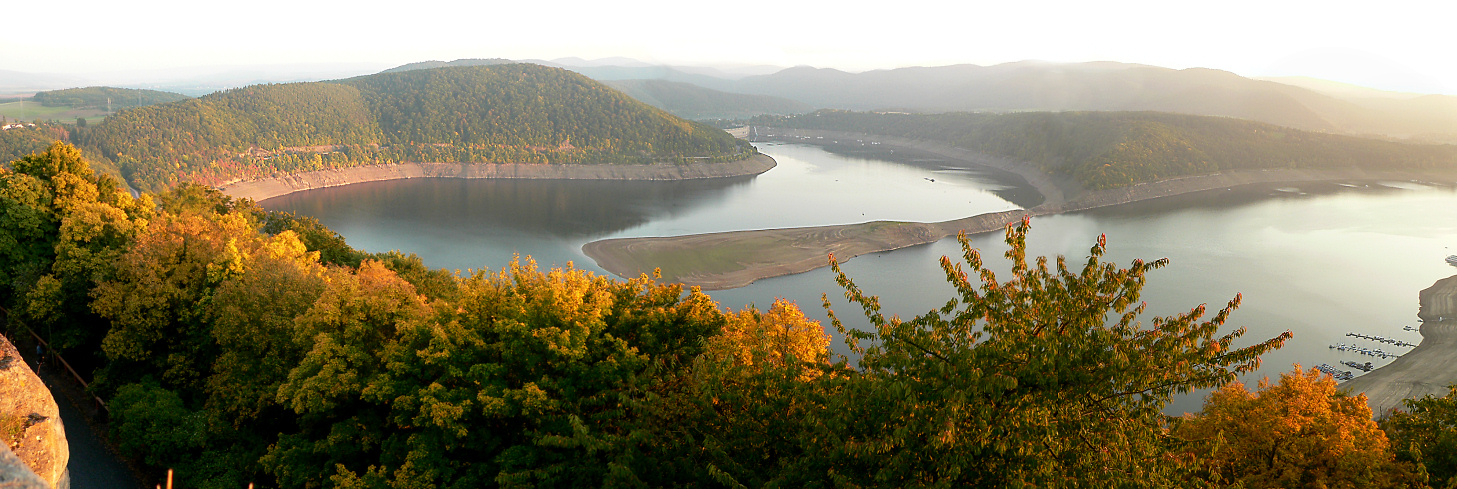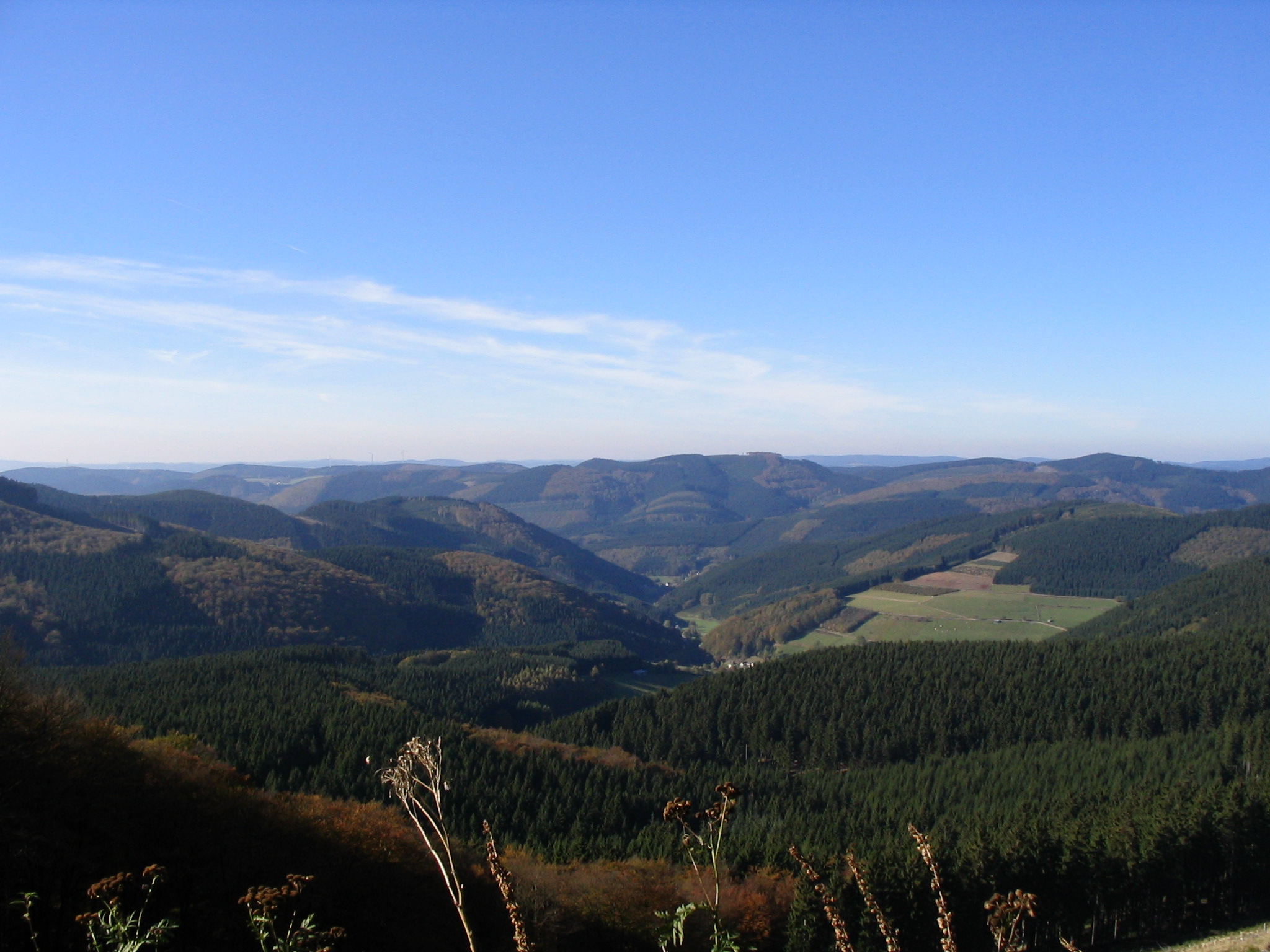|
Auf'm Knoll
Auf'm Knoll in the North Hessian county of Waldeck-Frankenberg, Germany is a hill, , in the Upland (hill range), Upland in the Rothaar mountains. Some parts of the hill belong to North Rhine-Westphalia. Location ''Auf´m Knoll'' lies in the Upland, the northeastern foothills of the Rothaar mountains, in the wider Diemelsee Nature Park area between Titmaringhausen North Rhine-Westphalia and Usseln Hesse. The source of the river ''Diemel'' is very close to the top of the hill, around 0.7 km in northeast direction. There are also sources for the river Aarbach (0.4 km northwest) and river Wamecke (1.1 km southwest) in the closer area. Natural region classification The ''Auf´m Knoll'' belongs to the major unit group of Süder Uplands (No. 33), the major unit of the Rothaar Mountains (with the High Sauerland) (333) and the sub-unit of the Rothaar Mountains#Upland, Upland (333.9). Most of it falls within the natural region of Inner Upland (333.90). Its norther ... [...More Info...] [...Related Items...] OR: [Wikipedia] [Google] [Baidu] |
Upland (hill Range)
The Upland (Low German for ''Oberland'' "highland") is a low mountain region forming the northeastern part of the High Sauerland and belongs the German state of Hesse, unlike the remainder of the High Sauerland which lies in Westphalia. The Upland falls within the district of Waldeck-Frankenberg, in North Hesse and corresponds to the territory of the municipality of Willingen. Geography The historic Upland lies in the southwestern area of the Diemelsee Nature Park at an average height of 500 to 700 m above NN. The northwestern and southwestern parts are almost entirely forested, whilst the centre, the area formally defined as a natural region called ''Upland'' (see below), only has islands of woods around some of the peaks. Natural regions The historic Upland lies predominantly in the northwestern Rothaar Mountains mountain range with smaller elements also in the East Sauerland foothills. It incorporates the natural region of Upland, as well as the (northeastern) half of ... [...More Info...] [...Related Items...] OR: [Wikipedia] [Google] [Baidu] |
Rothaar
The Rothaar Mountains (german: Rothaargebirge, , also ''Rotlagergebirge''), or Rothaar, is a low mountain range reaching heights of up to 843.1 m in North Rhine-Westphalia and Hesse, Germany. It is believed that its name must once have been ''Rod-Hard-Gebirge'', or "the cleared forest mountain range", as the range has nothing whatsoever to do with the colour red (''rot'' in German), nor with hair (''Haar''). Geography Location The thickly wooded Rothaar, rich in mineral deposits, is found (mostly) in Westphalia sandwiched between the Sauerland Mountain Range to the north, the Upland mountain range (northeastern foothills of the Rothaar) to the northeast, Wittgenstein Land to the southeast and the Siegerland to the southwest. The range's southeastern foothills are lies in Hesse, and is the only part that lies outside of Westphalia. It stretches from the upper Eder and the Lenne from the ''Kahler Asten'' (841 m) southwest of the Winterberg Tableland (''Winterbe ... [...More Info...] [...Related Items...] OR: [Wikipedia] [Google] [Baidu] |
Waldeck-Frankenberg
Waldeck-Frankenberg is a ''Kreis'' (district) in the north of Hesse, Germany. Neighbouring districts are Höxter, Kassel, Schwalm-Eder, Marburg-Biedenkopf, Siegen-Wittgenstein, Hochsauerland. History The district was created in 1972 by merging the two districts of Frankenberg and Waldeck. Most of the area of the district was previously part of the ''Freistaat Waldeck'', the successor of the principality of Waldeck. Geography The district is located in the mountains of the Sauerland, with the highest elevation in the district of . With , it's the largest district in Hessen. Four artificial lakes created by dams are in the district, the biggest is the Edersee, which covers an area of . The Eder is also the main river in the district; the Diemel in the north is a smaller river. Mountains * Sähre Coat of arms ;Blason :''“Per bend sinister Azure a lion rampant issuant per fess Argent and Gules and Or a star with eight rays Sable.”'' The coat of arms shows the lion of Hesse i ... [...More Info...] [...Related Items...] OR: [Wikipedia] [Google] [Baidu] |
North Hesse
North Hesse (german: Nordhessen) describes the northern part and historical heart of the German federated state of Hesse. The region is – unlike the name Lower Hesse – not a historical territory and also has no established, standard and official administrative function. However, the name is common and widely used today, not least to contrast it with its counterpart, South Hesse. Over one million people live in North Hesse and its largest city is the former capital of the Electorate of Hesse, Kassel Kassel (; in Germany, spelled Cassel until 1926) is a city on the Fulda River in northern Hesse, Germany. It is the administrative seat of the Regierungsbezirk Kassel and the district of the same name and had 201,048 inhabitants in December 2020 ....{{cn, date=September 2021 References External links www.nordhessen.de– Tourist portal of the region www.regionnordhessen.de– Economic portal of the region www.die-lage-ist-gut.de– The location portal of the region, ... [...More Info...] [...Related Items...] OR: [Wikipedia] [Google] [Baidu] |
Germany
Germany,, officially the Federal Republic of Germany, is a country in Central Europe. It is the second most populous country in Europe after Russia, and the most populous member state of the European Union. Germany is situated between the Baltic and North seas to the north, and the Alps to the south; it covers an area of , with a population of almost 84 million within its 16 constituent states. Germany borders Denmark to the north, Poland and the Czech Republic to the east, Austria and Switzerland to the south, and France, Luxembourg, Belgium, and the Netherlands to the west. The nation's capital and most populous city is Berlin and its financial centre is Frankfurt; the largest urban area is the Ruhr. Various Germanic tribes have inhabited the northern parts of modern Germany since classical antiquity. A region named Germania was documented before AD 100. In 962, the Kingdom of Germany formed the bulk of the Holy Roman Empire. During the 16th ce ... [...More Info...] [...Related Items...] OR: [Wikipedia] [Google] [Baidu] |
North Hessian
North Hesse (german: Nordhessen) describes the northern part and historical heart of the Germany, German States of Germany, federated state of Hesse. The region is – unlike the name Lower Hesse – not a historical territory and also has no established, standard and official administrative function. However, the name is common and widely used today, not least to contrast it with its counterpart, South Hesse. Over one million people live in North Hesse and its largest city is the former capital of the Electorate of Hesse, Kassel.{{cn, date=September 2021 References External links www.nordhessen.de– Tourist portal of the region www.regionnordhessen.de– Economic portal of the region www.die-lage-ist-gut.de– The location portal of the region, focussed on employment and life Regional plan for North Hesse from the Hessian state planning portal North Hesse, ... [...More Info...] [...Related Items...] OR: [Wikipedia] [Google] [Baidu] |
Rothaar Mountains
The Rothaar Mountains (german: Rothaargebirge, , also ''Rotlagergebirge''), or Rothaar, is a low mountain range reaching heights of up to 843.1 m in North Rhine-Westphalia and Hesse, Germany. It is believed that its name must once have been ''Rod-Hard-Gebirge'', or "the cleared forest mountain range", as the range has nothing whatsoever to do with the colour red (''rot'' in German), nor with hair (''Haar''). Geography Location The thickly wooded Rothaar, rich in mineral deposits, is found (mostly) in Westphalia sandwiched between the Sauerland Mountain Range to the north, the Upland mountain range (northeastern foothills of the Rothaar) to the northeast, Wittgenstein Land to the southeast and the Siegerland to the southwest. The range's southeastern foothills are lies in Hesse, and is the only part that lies outside of Westphalia. It stretches from the upper Eder and the Lenne from the ''Kahler Asten'' (841 m) southwest of the Winterberg Tableland (''Winterber ... [...More Info...] [...Related Items...] OR: [Wikipedia] [Google] [Baidu] |
North Rhine-Westphalia
North Rhine-Westphalia (german: Nordrhein-Westfalen, ; li, Noordrien-Wesfale ; nds, Noordrhien-Westfalen; ksh, Noodrhing-Wäßßfaale), commonly shortened to NRW (), is a States of Germany, state (''Land'') in Western Germany. With more than 18 million inhabitants, it is the List of German states by population, most populous state of Germany. Apart from the city-states, it is also the List of German states by population density, most densely populated state in Germany. Covering an area of , it is the List of German states by area, fourth-largest German state by size. North Rhine-Westphalia features 30 of the 81 German municipalities with over 100,000 inhabitants, including Cologne (over 1 million), the state capital Düsseldorf, Dortmund and Essen (all about 600,000 inhabitants) and other cities predominantly located in the Rhine-Ruhr metropolitan area, the largest urban area in Germany and the fourth-largest on the European continent. The location of the Rhine-Ruhr at the h ... [...More Info...] [...Related Items...] OR: [Wikipedia] [Google] [Baidu] |
Hesse
Hesse (, , ) or Hessia (, ; german: Hessen ), officially the State of Hessen (german: links=no, Land Hessen), is a States of Germany, state in Germany. Its capital city is Wiesbaden, and the largest urban area is Frankfurt. Two other major historic cities are Darmstadt and Kassel. With an area of 21,114.73 square kilometers and a population of just over six million, it ranks seventh and fifth, respectively, among the sixteen German states. Frankfurt Rhine-Main, Germany's second-largest metropolitan area (after Rhine-Ruhr), is mainly located in Hesse. As a cultural region, Hesse also includes the area known as Rhenish Hesse (Rheinhessen) in the neighbouring state of Rhineland-Palatinate. Name The German name '':wikt:Hessen#German, Hessen'', like the names of other German regions (''Schwaben'' "Swabia", ''Franken'' "Franconia", ''Bayern'' "Bavaria", ''Sachsen'' "Saxony"), derives from the dative plural form of the name of the inhabitants or German tribes, eponymous tribe, the Hes ... [...More Info...] [...Related Items...] OR: [Wikipedia] [Google] [Baidu] |
Süder Uplands
The Süder Uplands (1997) by Verlag Siedlungsforschung, p. 47, Retrieved 15 May 2014. (german: Süderbergland, sometimes ''Südergebirge'' i.e. Süder Hills), form a major natural region (no. 33 or D38) of the in the German states of and northwestern |
Rothaar Mountains
The Rothaar Mountains (german: Rothaargebirge, , also ''Rotlagergebirge''), or Rothaar, is a low mountain range reaching heights of up to 843.1 m in North Rhine-Westphalia and Hesse, Germany. It is believed that its name must once have been ''Rod-Hard-Gebirge'', or "the cleared forest mountain range", as the range has nothing whatsoever to do with the colour red (''rot'' in German), nor with hair (''Haar''). Geography Location The thickly wooded Rothaar, rich in mineral deposits, is found (mostly) in Westphalia sandwiched between the Sauerland Mountain Range to the north, the Upland mountain range (northeastern foothills of the Rothaar) to the northeast, Wittgenstein Land to the southeast and the Siegerland to the southwest. The range's southeastern foothills are lies in Hesse, and is the only part that lies outside of Westphalia. It stretches from the upper Eder and the Lenne from the ''Kahler Asten'' (841 m) southwest of the Winterberg Tableland (''Winterber ... [...More Info...] [...Related Items...] OR: [Wikipedia] [Google] [Baidu] |
High Sauerland
Hochsauerlandkreis (meaning “High Sauerland District” in German) is a Kreis (district) in the east of North Rhine-Westphalia, Germany. Neighboring districts are Soest, Paderborn, Höxter, Waldeck-Frankenberg, Siegen-Wittgenstein, Olpe, Märkischer Kreis. The district is named “High Sauerland” because two of the highest mountains of the Sauerland mountainous landscape, Langenberg and Kahler Asten are in its territory. With 2,766 ft / 843 m (Langenberg) and 2,762 ft / 842 m (Kahler Asten) these are also the highest mountains of North Rhine-Westphalia. History The district was established in 1975 in the reorganization of the districts in North Rhine-Westphalia by merging the previous districts Arnsberg, Brilon and Meschede. Geography Geographically the district covers a big part of the Sauerland mountains, including the highest and third highest elevation – the Langenberg near Olsberg with 2,766 ft / 843 m, and the better known Kahler Asten with ... [...More Info...] [...Related Items...] OR: [Wikipedia] [Google] [Baidu] |



.jpg)
